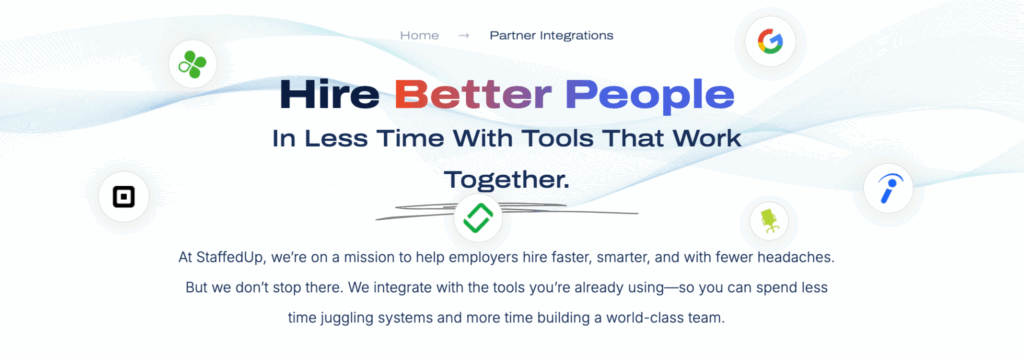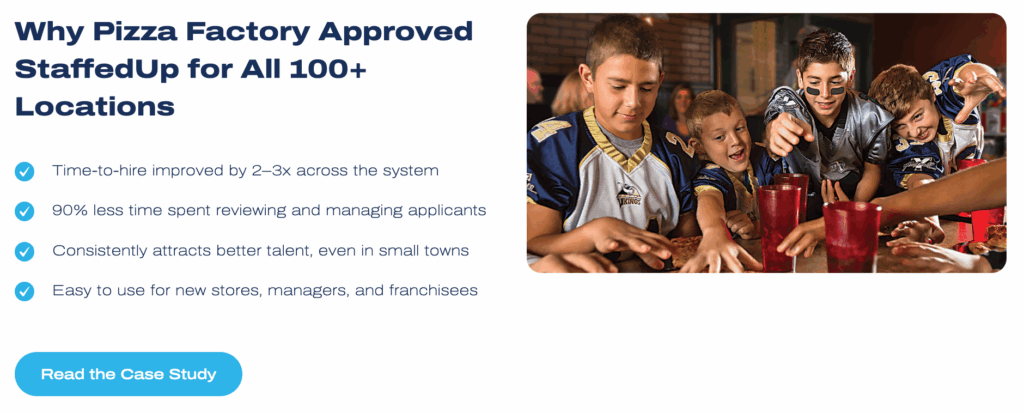Introduction
Staff scheduling can make or break your business. If you’ve ever been stuck short-staffed during a dinner rush, or paid for extra employees to stand around on a slow afternoon, you already know the impact. Poor scheduling creates stress, costs money, and often drives good employees away. On the other hand, smart scheduling keeps your team balanced, your labor budget in check, and your service levels consistent.
So, what does it actually mean to schedule staff effectively? It’s not just about filling in names on a calendar. It’s about matching the right number of employees with the right skills to the shifts when you need them most. It also means respecting employee availability, giving fair notice, and keeping communication clear.
According to the U.S. Bureau of Labor Statistics, restaurants and hospitality remain among the industries with the highest turnover rates, averaging 70% or more each year. Many operators point to poor scheduling as one of the main causes of turnover. Employees who don’t get enough hours leave for other jobs. Those who get stuck with unfair schedules or constant last-minute changes often burn out. Managers end up repeating the cycle of hiring and training over and over.
This article will walk you through every step of how to schedule staff effectively. We’ll look at why it matters, the common mistakes that cause problems, and a proven step-by-step process to build better schedules. You’ll also see best practices, software tools, and legal considerations to keep your team running smoothly.

What Does Effective Staff Scheduling Mean?
When people hear “scheduling,” they often think of simply covering shifts. But effective scheduling is about balance. It combines three key goals:
- Business needs – Having the right number of staff on hand to serve customers, stay within labor budgets, and keep operations smooth.
- Employee needs – Respecting availability, personal preferences, and providing enough hours to keep staff satisfied.
- Legal requirements – Following labor laws around breaks, overtime, and advance notice.
When these three areas overlap, managers see fewer conflicts, less turnover, and stronger team performance.
“Scheduling isn’t just about filling slots. It’s about setting your team up to succeed.” – Quote from a hospitality operations manager.
Effective scheduling looks like this:
- A busy Saturday night has enough servers, cooks, and hosts to handle the rush without staff feeling overworked.
- A slow Tuesday afternoon doesn’t waste money by having too many people standing around.
- Staff know their schedules at least a week in advance and can plan their lives.
- Employees see fairness—everyone shares both the prime shifts and the less desirable ones.
If you’re not sure who you need to stay staffed, we get it. Put yourself in a good position with an applicant tracking system (ATS), StaffedUp allows you to always accept applications even if you’re not necessarily hiring for that specific role In a bind? Reach out to this pool of qualified candidates to see who can cover a shift tonight.
Why Learning How to Schedule Staff Effectively Matters
Bad scheduling costs more than a few missed shifts. It can directly impact your business in measurable ways.
1. Higher Labor Costs
Overstaffing leads to wasted payroll dollars. Understaffing leads to overtime pay when employees are stretched too thin.
2. Employee Turnover
Research from Shiftboard shows 55% of hourly workers cite poor scheduling as a top reason they quit jobs. High turnover means constant rehiring and retraining.
3. Customer Experience
If customers wait too long for food or service, they may not return. Understaffing during peak hours hurts the guest experience.
4. Employee Morale
Unfair schedules, last-minute changes, or ignoring staff preferences create resentment. This affects teamwork and productivity.
5. Compliance Risks
Many cities and states now require advance notice of schedules, guaranteed rest periods, and fair workweek policies. Failing to comply can lead to fines. Knowing how many team members in each role to operate is important here.
In short, learning how to schedule staff effectively saves money, reduces stress, and helps keep your business legally compliant.
Common Staff Scheduling Mistakes Managers Make
Even experienced managers can fall into bad scheduling habits. Here are the most frequent mistakes:
- Posting schedules too late – Staff need time to plan. Posting schedules the night before causes frustration.
- Favoritism – Giving the “best” shifts to the same employees leads to unfairness.
- Ignoring availability – Overriding time-off requests without explanation pushes employees away.
- Not tracking labor data – Guessing busy times instead of using sales and labor data often leads to mismatched staffing.
- Relying only on paper schedules – Paper or Excel sheets make changes messy and communication harder.
Step-by-Step Guide: How to Schedule Staff Effectively
Now, let’s walk through the exact process managers can follow to schedule better.
Step 1: Forecast Your Business Needs
Look at past sales data, reservation trends, and seasonal patterns. For example, a coffee shop may need double the staff on Monday mornings compared to afternoons. Implementing a solid tech stack can help with this first step.
Step 2: Collect Employee Availability
Have a clear system where staff can share their availability, time-off requests, and preferred shifts. This prevents confusion later.
Step 3: Build a Draft Schedule
Use a weekly template to start. Assign shifts based on skill level, availability, and expected demand. Balance experienced workers with new hires to avoid gaps in service.
Step 4: Review for Fairness
Check that no one is overloaded with back-to-back shifts or stuck only with undesirable times. Rotate weekends, holidays, and prime shifts fairly.
Step 5: Communicate Early
Post the schedule at least 7–14 days in advance. Many states now require at least this much notice.
Step 6: Stay Flexible
Last-minute call-offs happen. Build a list of “on-call” staff or use a scheduling app that lets employees swap shifts easily. StaffedUp helps build a qualified pool of candidates to pull on at a moment’s notice.

Best Practices for Scheduling Staff
Here are proven tips that managers across industries use to stay organized:
- Use scheduling software instead of manual spreadsheets. Connecteam, 7shifts & Homebase are good programs to start with.
- Base schedules on data, not guesswork. Digital transformation is not just a nice-to-have, it’s a requirement to stay ahead in the hospitality space.
- Schedule overlapping shifts during peak hours to avoid gaps.
- Cross-train employees so they can cover more than one role to cover in staff shortages.
- Hold regular check-ins to discuss scheduling issues with your team.
Case Study: Restaurant Group Fixes Scheduling Chaos
A mid-sized restaurant group in the Midwest struggled with last-minute call-offs and constant complaints about unfair shifts. Managers used paper schedules and group texts, which caused miscommunication.
After switching to a scheduling system that allowed digital shift swaps, shift reminders, and automatic labor forecasts, the group saw:
- 35% fewer last-minute call-offs
- 20% lower labor costs due to better staffing matches
- Employee satisfaction scores improve by 40%
This shows how better systems and fair scheduling practices directly improve both operations and morale.

Tools and Software for Building Qualified Staff Pool
Using the right tools can make scheduling much easier. Here’s a comparison of common options:
| Tool | Best For | Key Features | Downside |
| StaffedUp | Restaurants & hospitality teams | Mobile-friendly, applicant tracking, schedule integration | Focused on service industry |
| 7shifts | Restaurants | Scheduling + communication tools | Hiring features are limited |
| Homebase | Retail & service | Scheduling + time tracking | Heavier if only used for scheduling |
| When I Work | General businesses | Shift swaps, availability tracking | Can be costly for large teams |
Legal and Compliance Factors in Scheduling
Many areas have adopted fair workweek laws that require:
- Posting schedules 7–14 days in advance
- Paying staff for last-minute cancellations
- Guaranteeing rest periods between shifts
- Overtime compliance
Managers must know local labor laws to avoid penalties. Keeping digital records of schedules can also help in case of disputes. In areas where seasonal hiring fluctuates your staff, make sure to staff smart and keep that qualified applicant pool full for when your busy season returns.
How to Improve Over Time with StaffedUp
Effective scheduling is ongoing. Managers should:
- Track labor costs vs. sales each week
- Gather feedback from staff about scheduling fairness
- Adjust staffing models based on seasonal trends
- Review turnover rates and see if scheduling changes improve retention
- Utilize StaffedUp to build Team levels needed. The platform was built to tackle this exact struggle in hiring.
Continuous improvements make scheduling smoother and keep both staff and customers happy.
Conclusion: The Payoff of Scheduling Staff Effectively
Learning how to schedule staff effectively takes effort but pays off. Managers reduce labor costs, employees feel valued, and customers get better service.
With the right system, you can move away from stressful last-minute scheduling and toward a process that is fair, predictable, and efficient.
The result:
- Happier, more engaging staff
- Lower turnover
- More consistent operations
- Stronger customer experiences
Scheduling isn’t just a back-office task—it’s a business strategy. Start improving your scheduling process today and watch your team and profits grow. Don’t forget to check out StaffedUp’s overview video, see what you’re missing out on.



